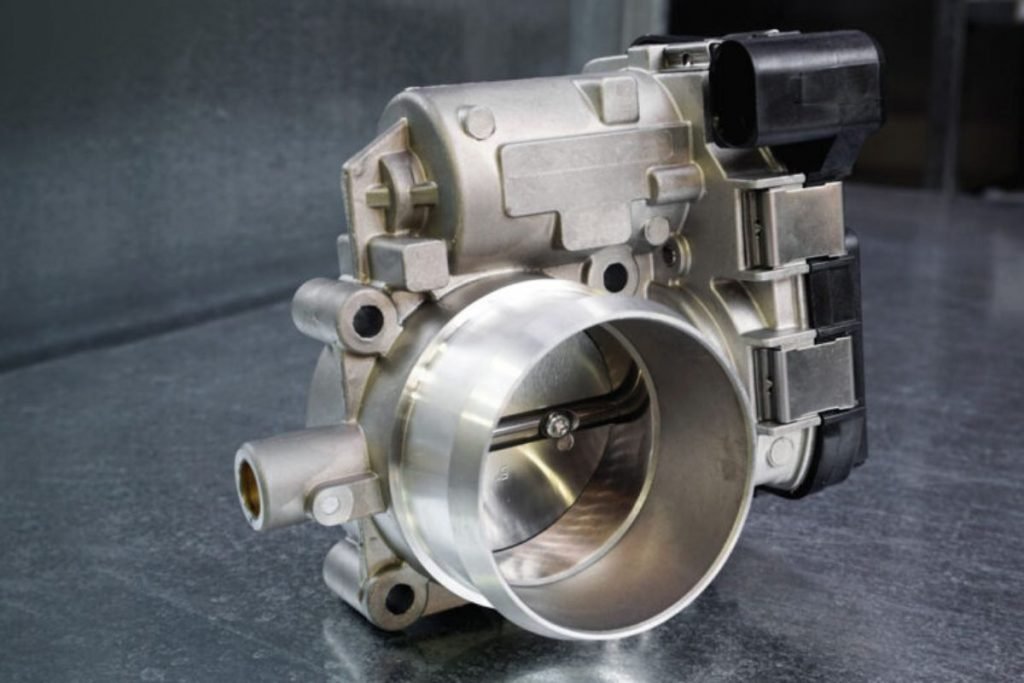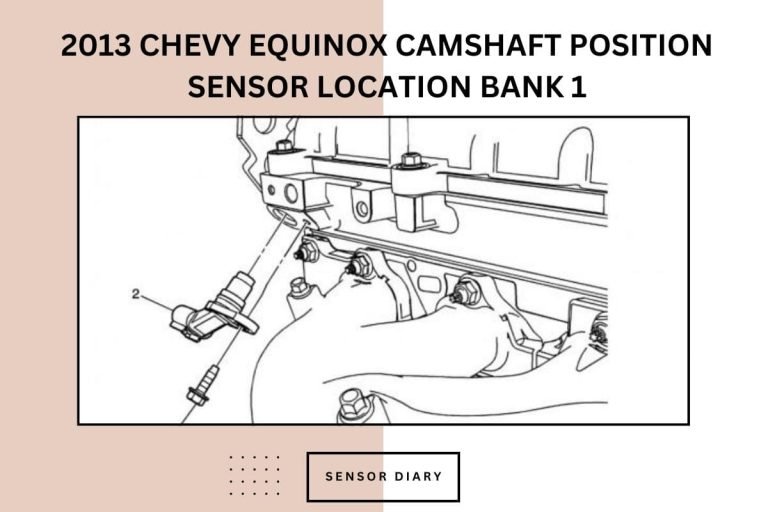Jeep Grand Cherokee Throttle Position Sensor Symptoms
The throttle position sensor (TPS) is a critical component in the operation of your Jeep Grand Cherokee’s engine. It monitors the position of the throttle valve and sends signals to the engine control unit, which adjusts the air and fuel mixture accordingly. A malfunctioning TPS can cause a variety of issues that can affect engine performance and drivability.

This blog post will explore the symptoms of a faulty Jeep Grand Cherokee throttle position sensor, how to diagnose and repair the issue, and tips for preventing problems.
What is a Throttle Position Sensor?
The TPS is located on the throttle body and is responsible for communicating with the engine control unit (ECU) to determine the position of the throttle valve.
The ECU uses this information to regulate the air and fuel mixture, ensuring optimal engine performance. The TPS consists of a sensor connected to the throttle shaft, which moves as the accelerator pedal is depressed or released.
Symptoms of a Faulty Throttle Position Sensor
Several symptoms can indicate a malfunctioning TPS. Here are some of the most common issues associated with a faulty Jeep Grand Cherokee throttle position sensor and their potential causes:
Idling Problems
When the TPS is not functioning correctly, the engine may idle roughly or stall altogether. This can be caused by the TPS sending inaccurate signals to the ECU, resulting in incorrect fuel and air ratios.
As a result, the engine may struggle to maintain a consistent idle speed, leading to rough running or stalling.
Hesitation and Stalling
A faulty TPS can also cause hesitation and stalling while driving. The engine may hesitate or surge when the accelerator is pressed or stall completely.
This can occur because the TPS is not providing accurate information to the ECU, leading to incorrect air and fuel ratios. In some cases, the TPS may also fail to respond to changes in throttle position, leading to delayed or erratic acceleration.
Decreased Fuel Efficiency
A malfunctioning TPS can also lead to decreased fuel efficiency. When the TPS is not functioning correctly, the ECU may supply too much or too little fuel to the engine, resulting in reduced fuel economy.
Several factors, including a faulty sensor, wiring issues, or a problem with the ECU itself can cause this.
Warning Lights
Sometimes, a faulty TPS can trigger warning lights on the dashboard, such as the Check Engine Light or the Malfunction Indicator Lamp (MIL).
This occurs when the TPS sends incorrect signals to the ECU, indicating a problem with the sensor or the throttle system as a whole. If you notice any warning lights on your dashboard, it is important to have your vehicle inspected by a qualified mechanic as soon as possible.
Diagnosis and Repair of a Faulty Throttle Position Sensor
If you are experiencing any of the symptoms outlined above, it is important to have your Jeep Grand Cherokee inspected by a qualified mechanic.
The first step in diagnosing a faulty TPS is to thoroughly inspect the throttle system, including the sensor and its wiring. The mechanic may also use a scan tool to read any diagnostic trouble codes (DTCs) stored in the ECU.
Once the issue has been diagnosed, the mechanic will typically replace the faulty TPS with a new sensor. This may involve removing the throttle body to access the sensor, which can be time-consuming. In some cases, replacing other components in the throttle system may also be necessary, such as the throttle body or the ECU itself.
How do you test a throttle position sensor?
If you suspect that your Jeep Grand Cherokee’s throttle position sensor (TPS) is faulty, you can test it using a digital multimeter. Here are the steps to follow:
- Turn off the engine and remove the key from the ignition.
- Locate the TPS on the throttle body. It is usually on the opposite side of the throttle linkage, and it has a three-wire connector attached to it.
- Disconnect the TPS connector by pressing the locking tab and pulling it out gently.
- Set your digital multimeter to the ohms setting and connect the positive probe to the center wire of the TPS connector and the negative probe to the ground.
- Turn on the ignition without starting the engine and observe the reading on the multimeter.
- Slowly move the throttle plate and watch the ohm reading on the multimeter. The reading should increase or decrease smoothly and gradually with no sudden jumps or dropouts.
- Note the highest and lowest readings and compare them to the manufacturer’s specifications. A typical range for a TPS is between 0.5 to 5 volts. The TPS may be faulty if the readings fall outside of this range.
It’s important to note that testing the TPS alone may not always diagnose a driveability issue. Other components in the throttle system may also cause similar symptoms, and it’s best to have a qualified mechanic perform a full diagnostic to accurately diagnose and repair the issue.
How do you reset the throttle position sensor on a Jeep Grand Cherokee?
Resetting the throttle position sensor (TPS) on a Jeep Grand Cherokee involves resetting the vehicle’s Electronic Control Module (ECM). Here are the steps to follow:
- Turn off the engine and remove the key from the ignition.
- Disconnect the negative battery cable from the battery terminal.
- Wait for at least 30 minutes before proceeding. This allows the vehicle’s ECM to reset and clear any stored error codes.
- Reconnect the negative battery cable to the battery terminal.
- Turn on the ignition without starting the engine and wait for about three seconds.
- Press the accelerator pedal all the way down and release it three times within 10 seconds.
- Turn off the ignition and wait for at least 10 seconds.
- Start the engine and let it idle for at least two minutes. During this time, the ECM will relearn the throttle position values based on the driver’s input.
After completing these steps, the TPS should be reset, and the ECM should be functioning correctly. It’s important to note that this procedure is not always necessary and should only be performed if the TPS or ECM has been replaced or if the vehicle is experiencing driveability issues. If you are still experiencing issues with your Jeep Grand Cherokee’s throttle system after resetting the TPS, it is recommended to have it inspected by a qualified mechanic.
Preventing Throttle Position Sensor Issues
While it is not always possible to prevent throttle position sensor issues, there are several steps you can take to help maintain your Jeep Grand Cherokee’s throttle system:
- Perform regular maintenance, including oil changes and air filter replacements.
- Avoid using low-quality fuel or contaminated gasoline, which can damage the throttle system.
- Keep the throttle body and its components clean and free of debris.
- Drive your vehicle responsibly, avoiding harsh acceleration or excessive idling.
By following these tips, you can help ensure that your Jeep Grand Cherokee’s throttle system remains in good working order, reducing the risk of TPS issues and other engine problems.
Infiniti q50 Front Sensor Malfunction Explained
Conclusion
The throttle position sensor is crucial to your Jeep Grand Cherokee’s engine system. A malfunctioning TPS can lead to various issues, from idling problems to decreased fuel efficiency. If you are experiencing any symptoms of a faulty TPS, it is essential to have your vehicle inspected by a qualified mechanic. By maintaining your vehicle’s throttle system, you can help ensure that your vehicle remains in good working order, reducing the risk of TPS issues and other engine problems. With proper care and maintenance, your Jeep Grand Cherokee can provide reliable performance and driving pleasure for years.



